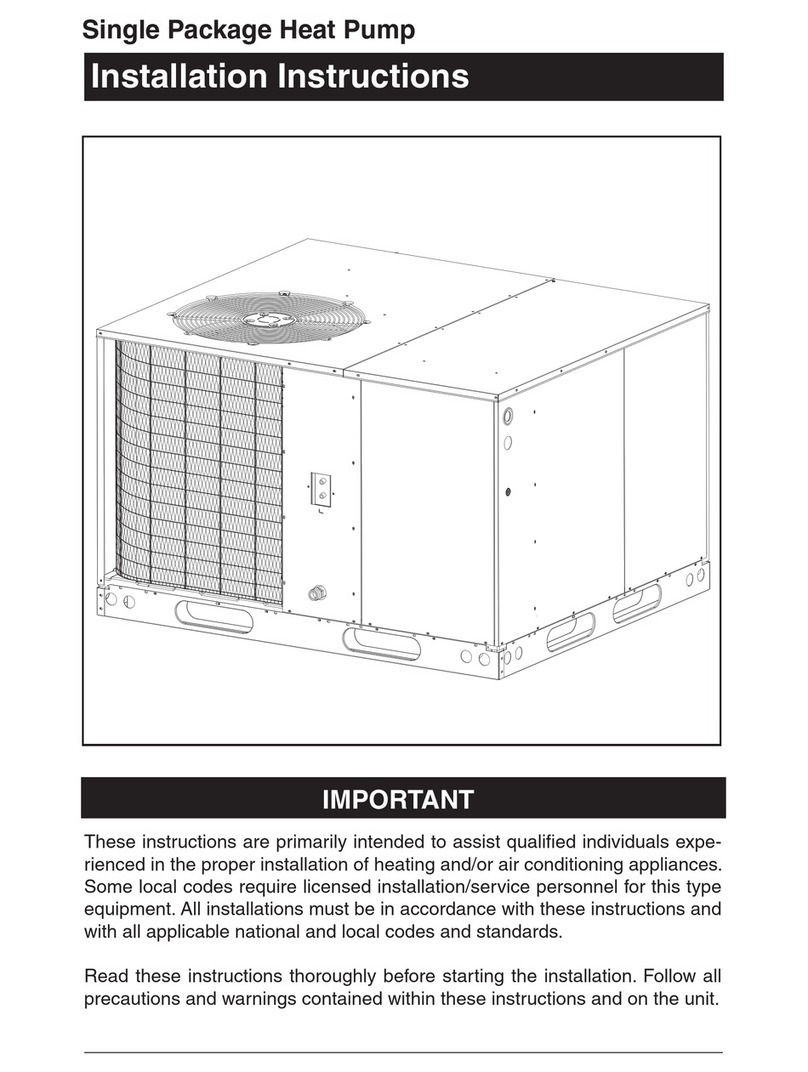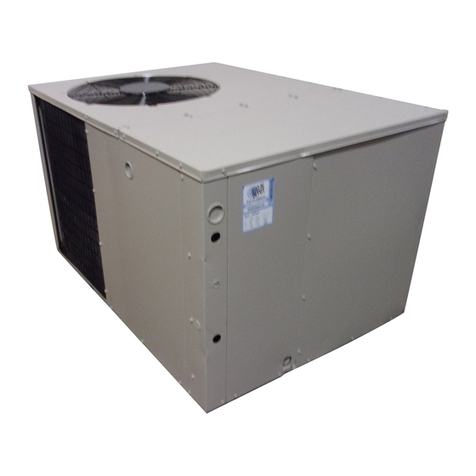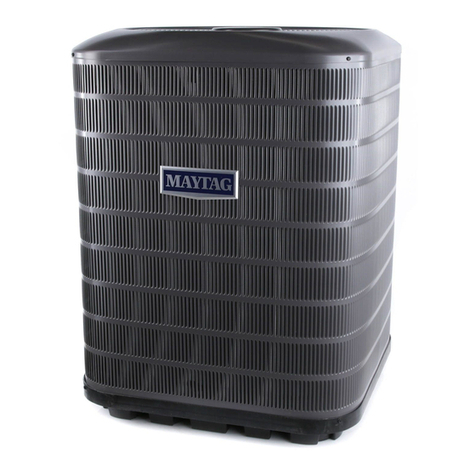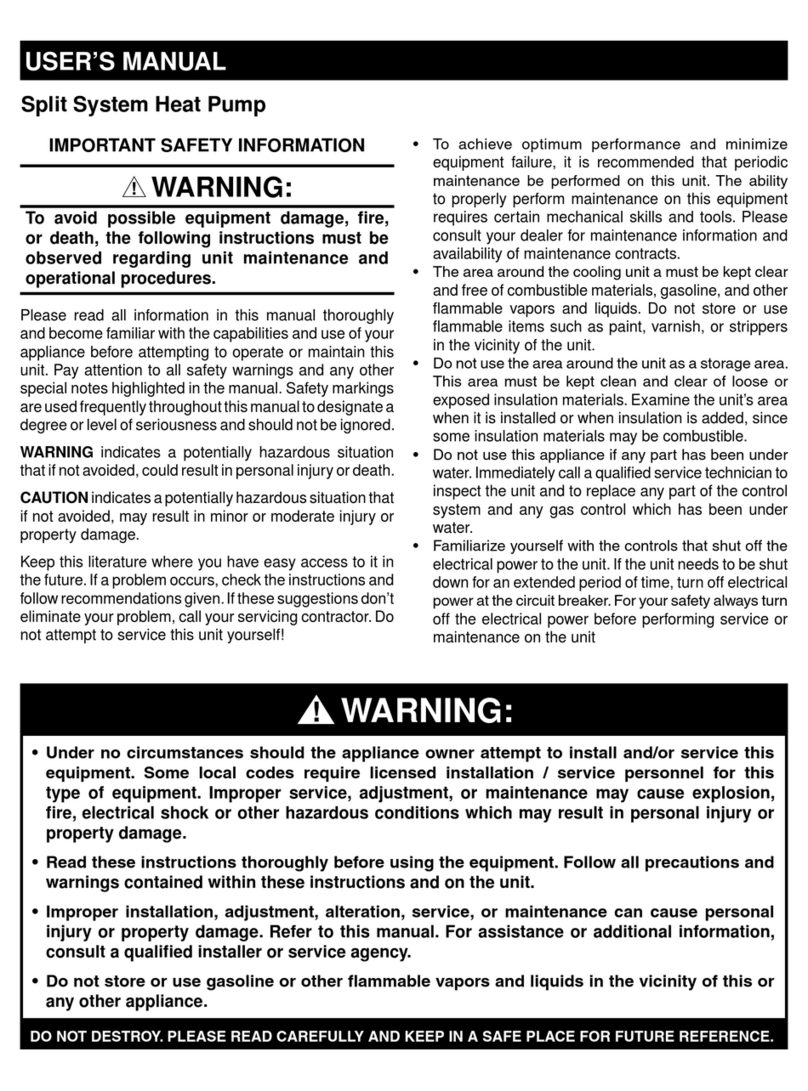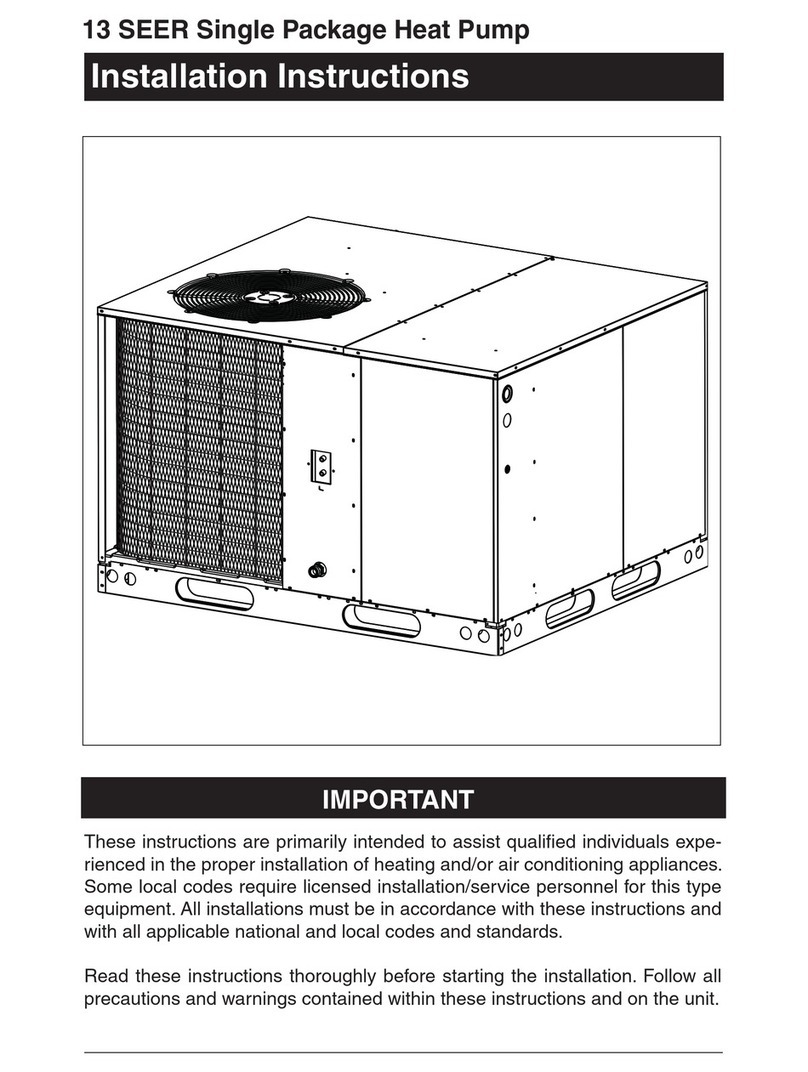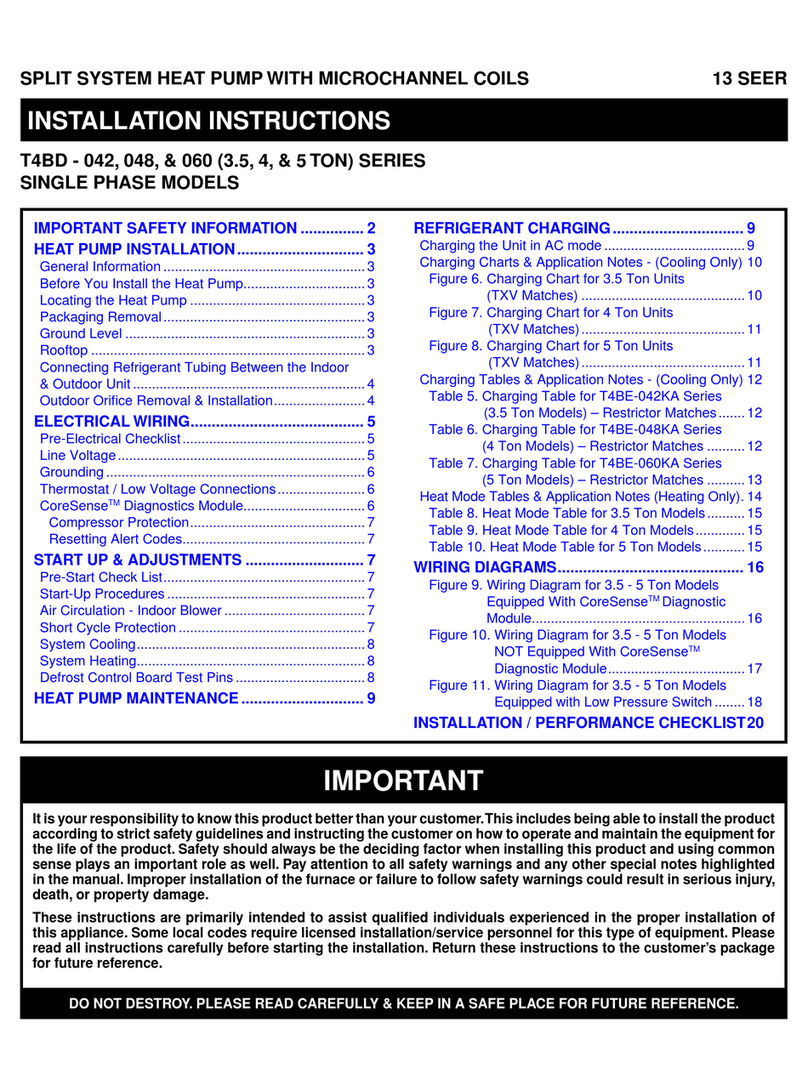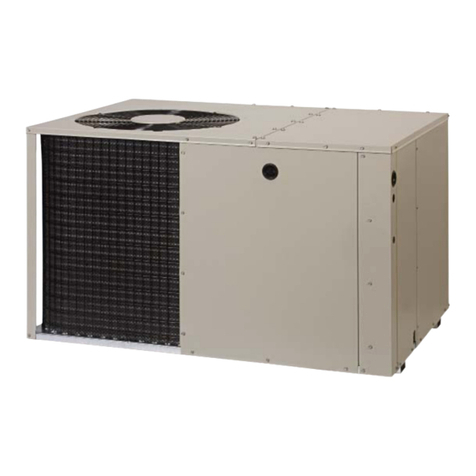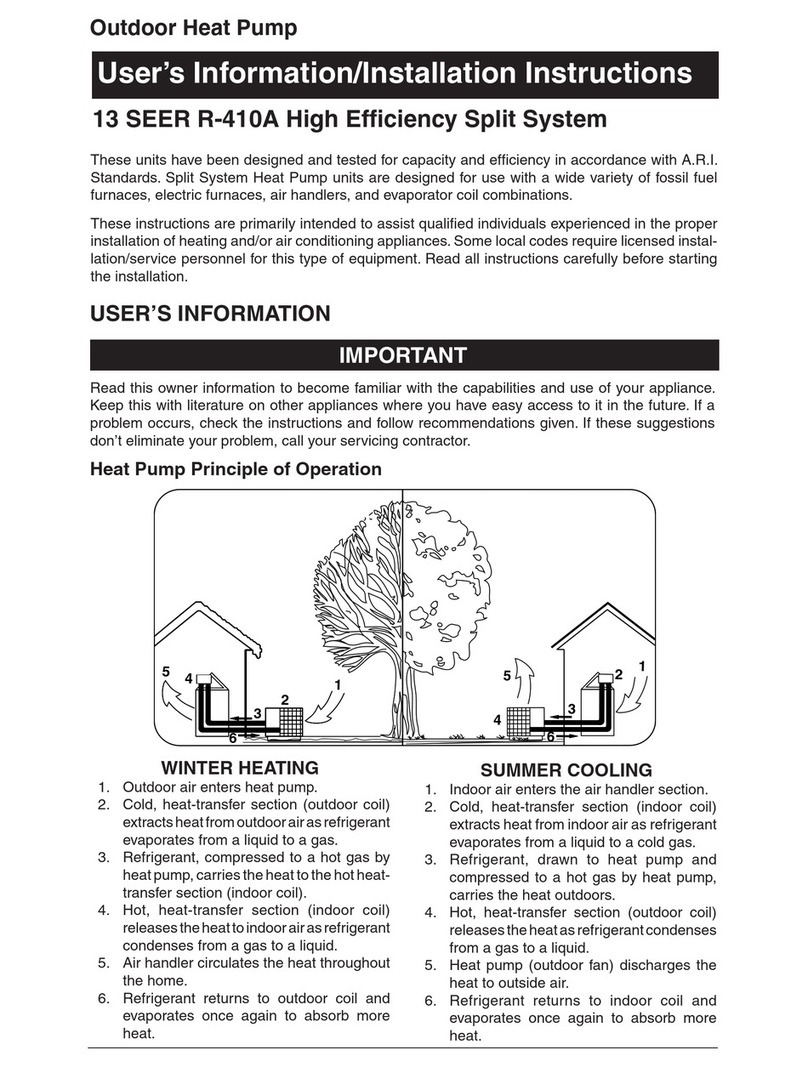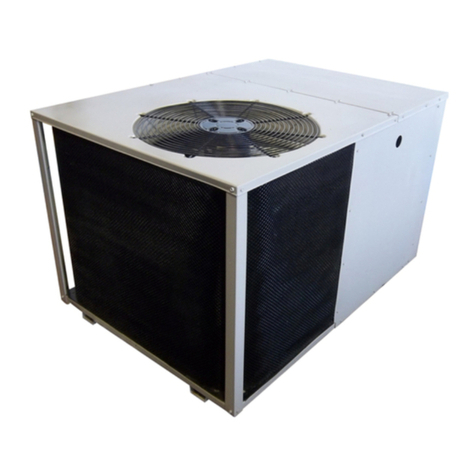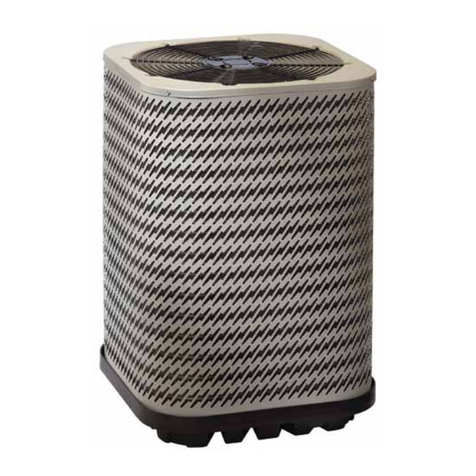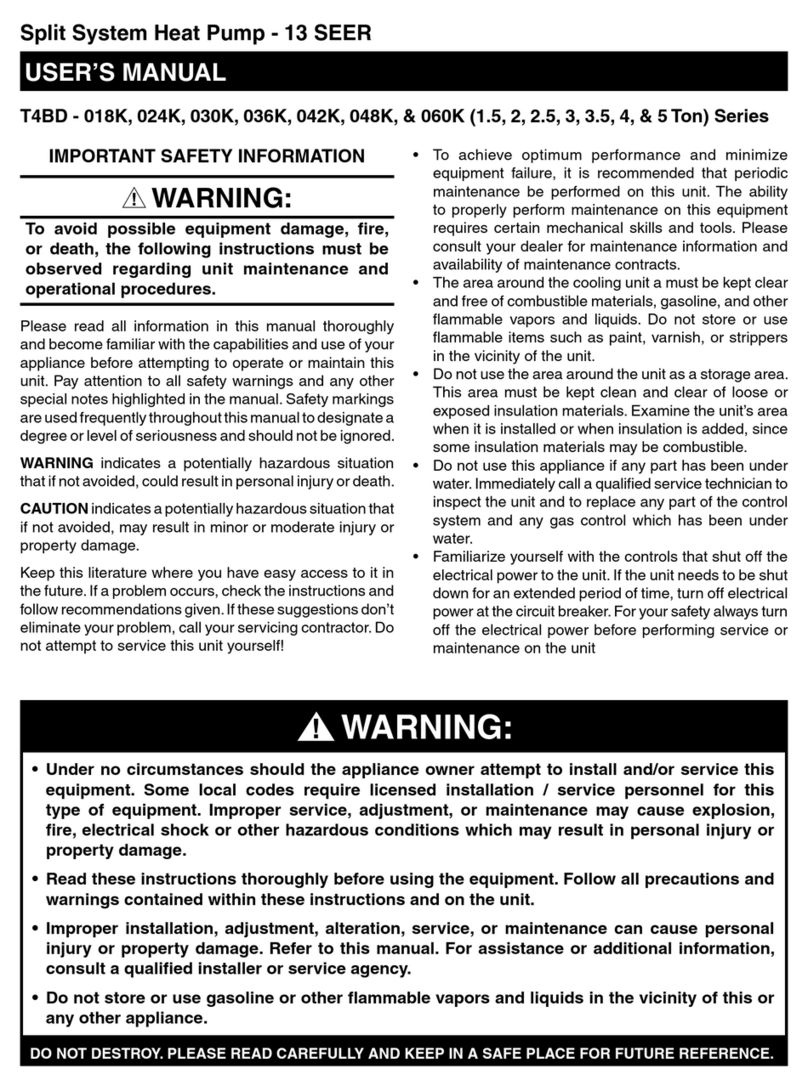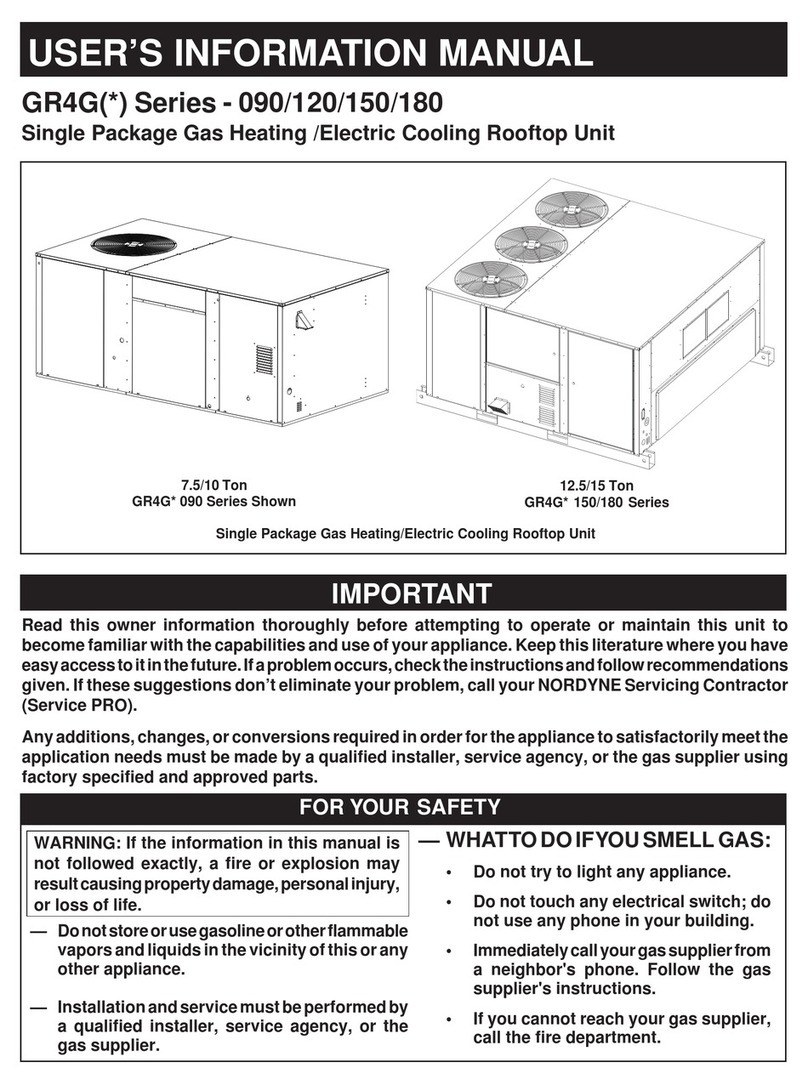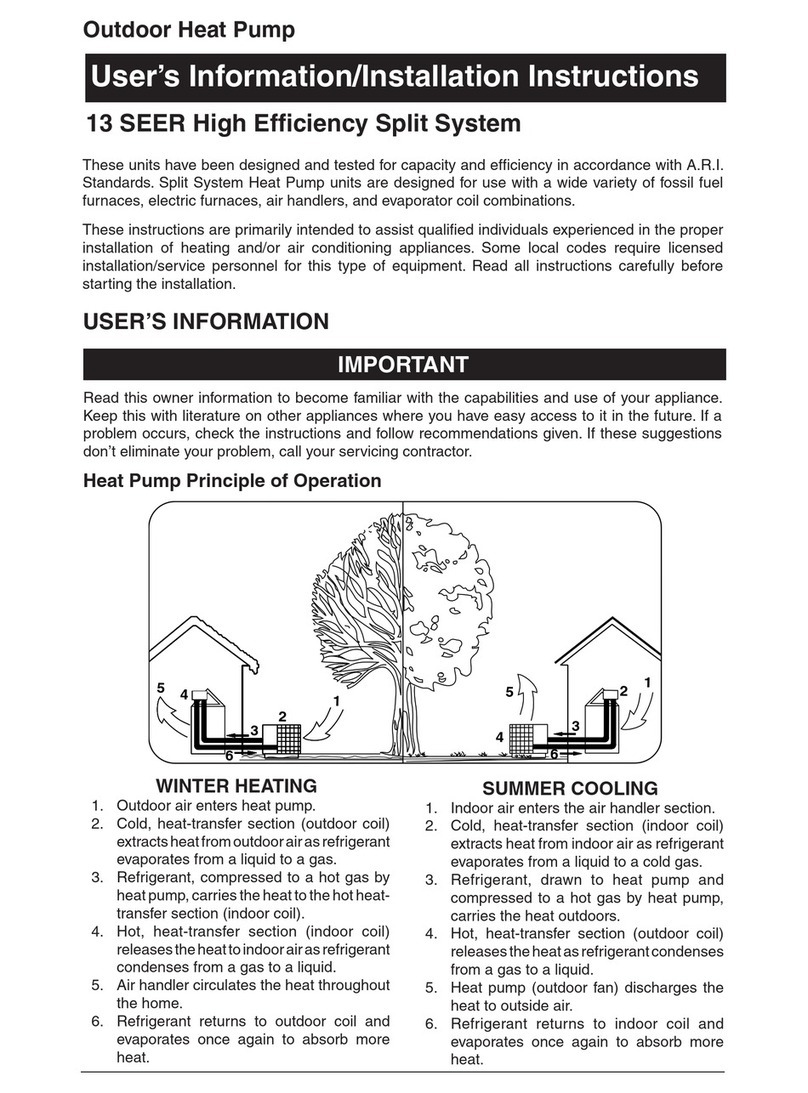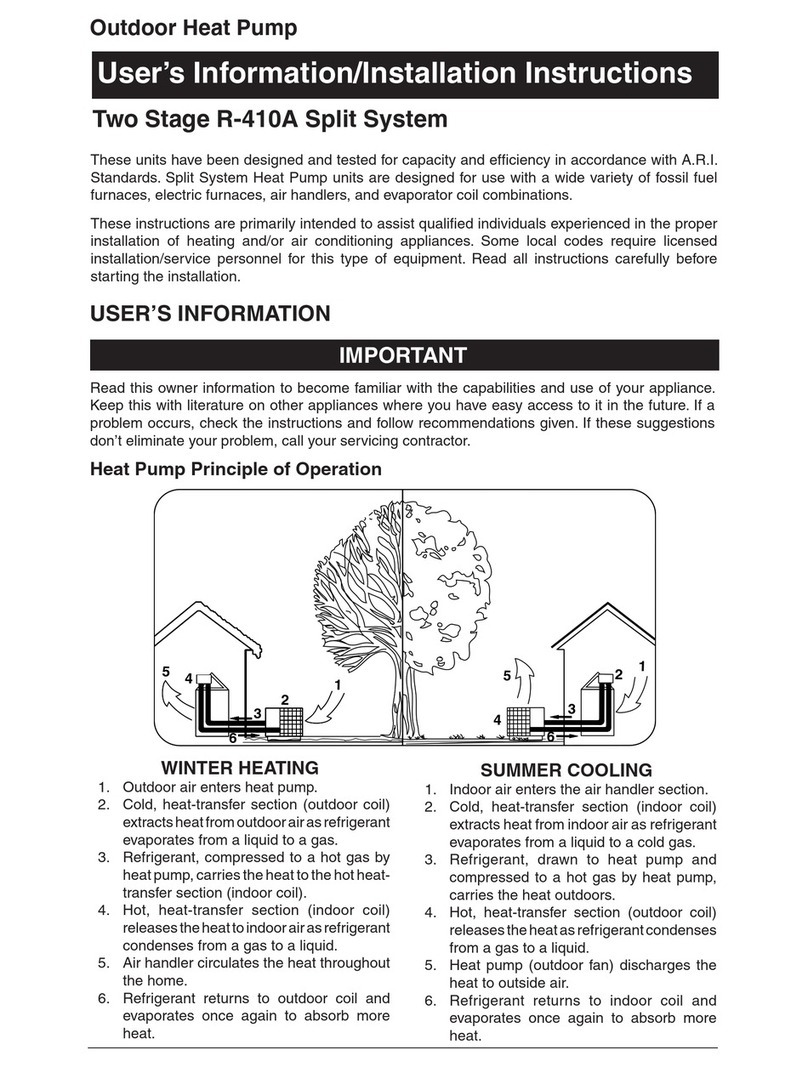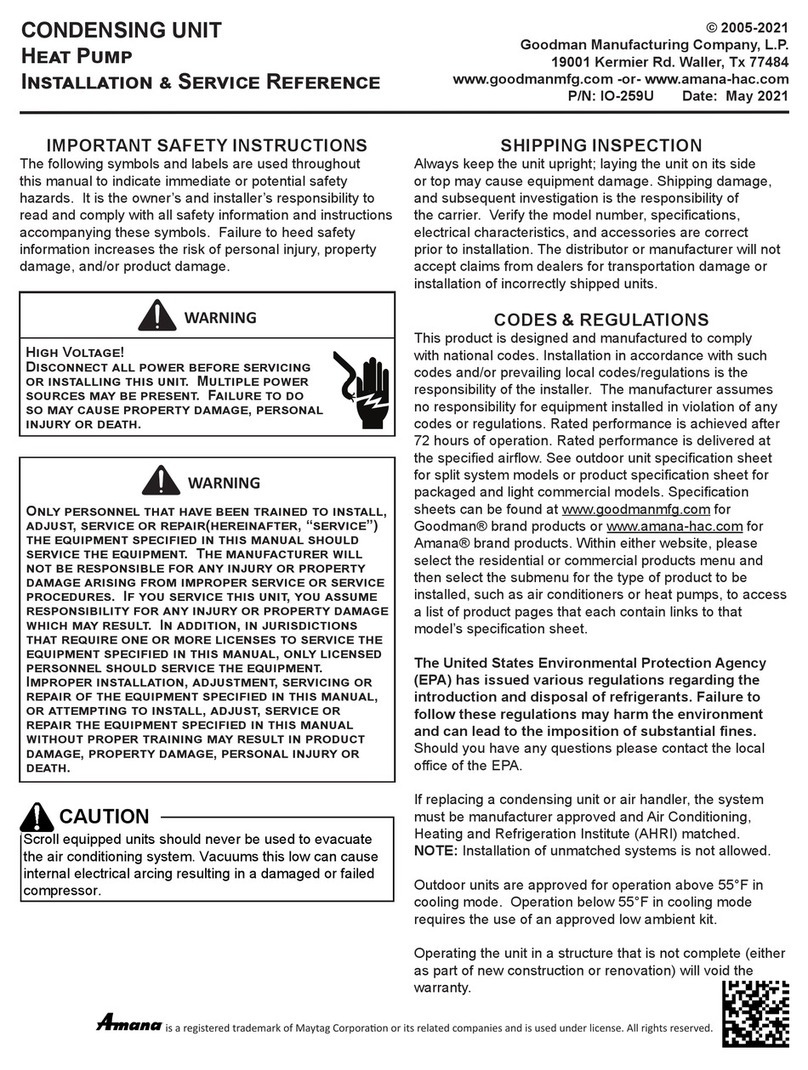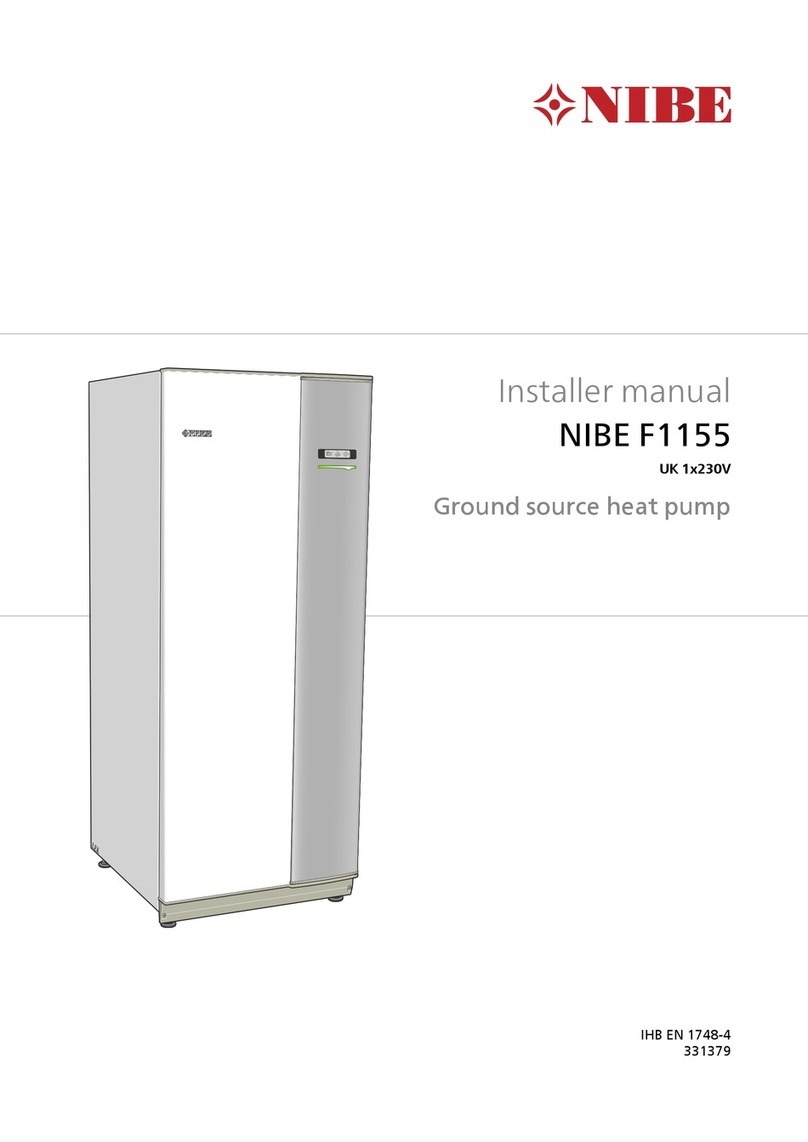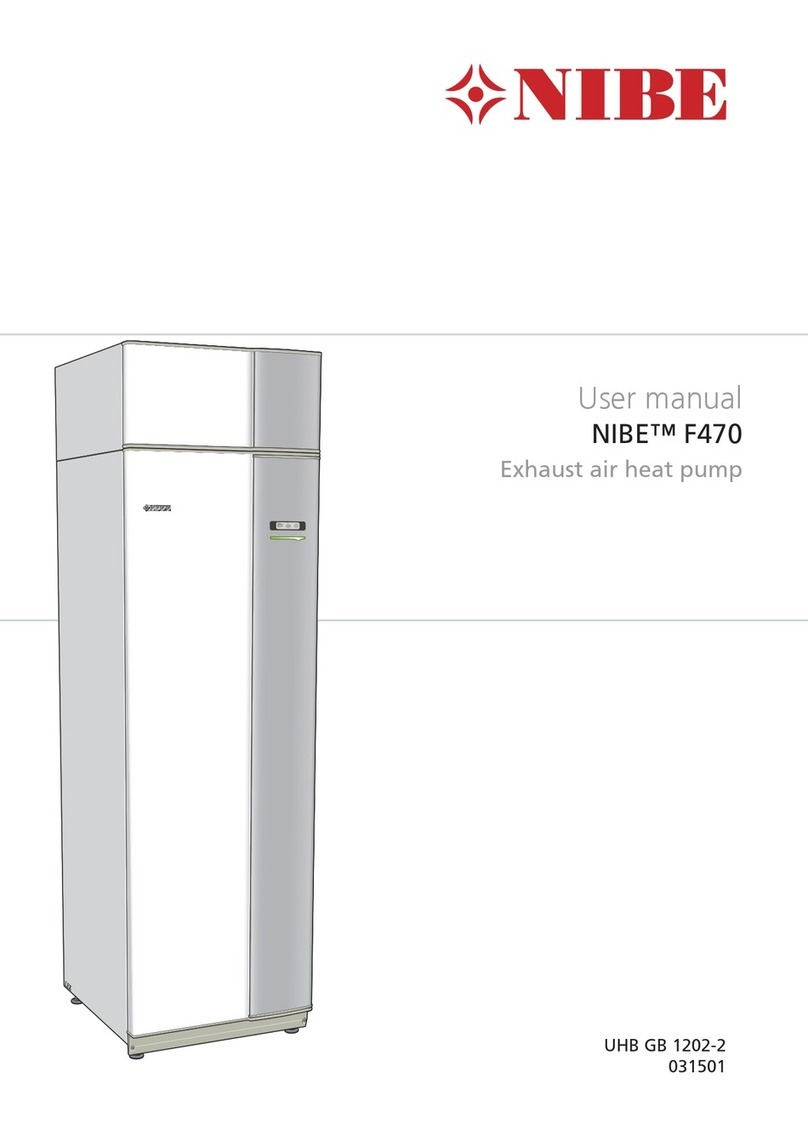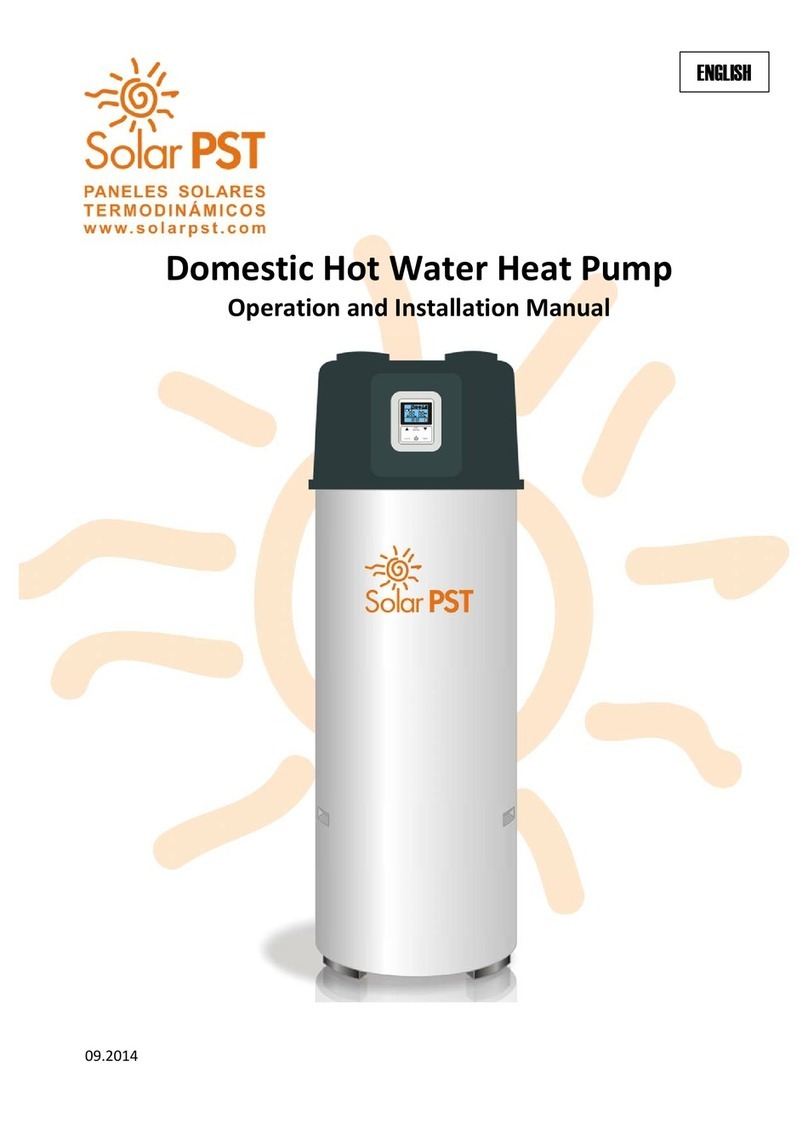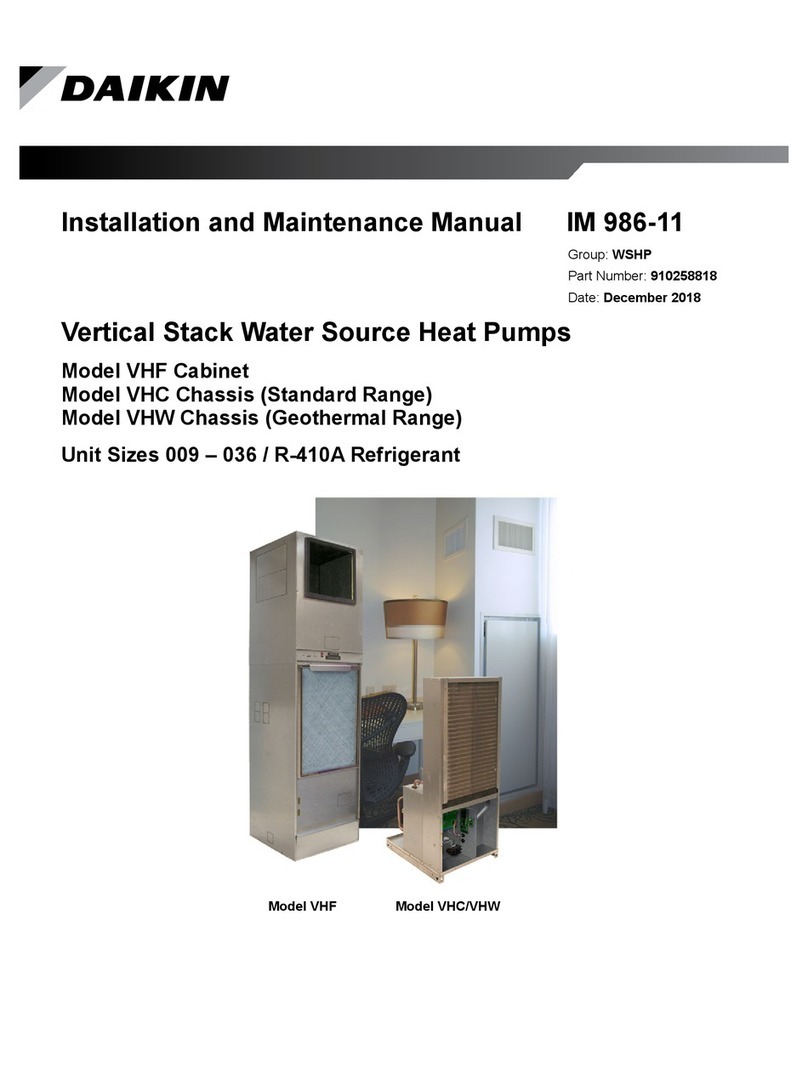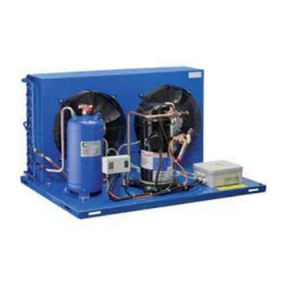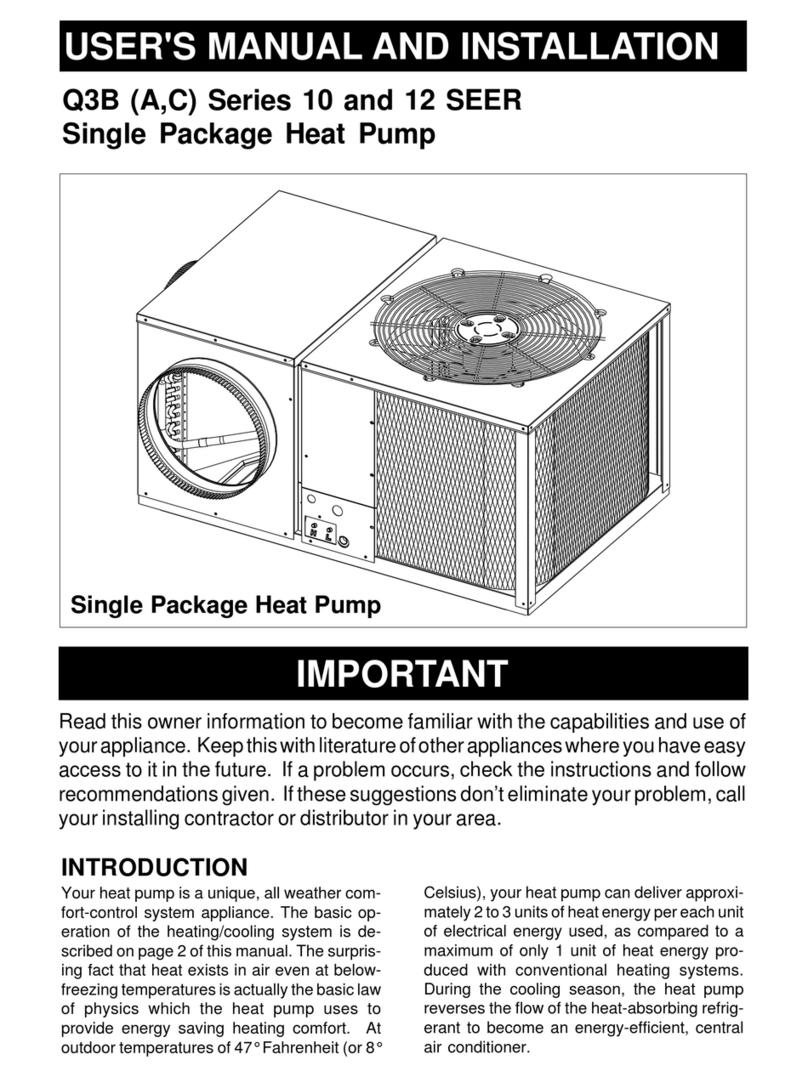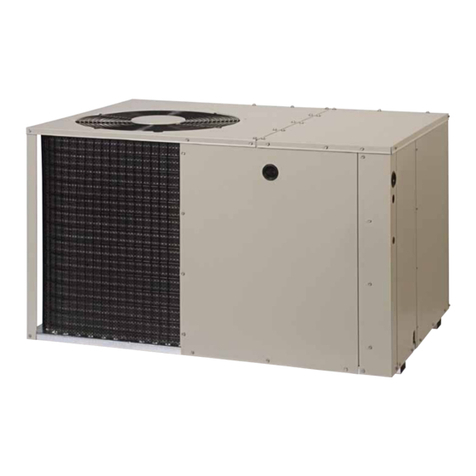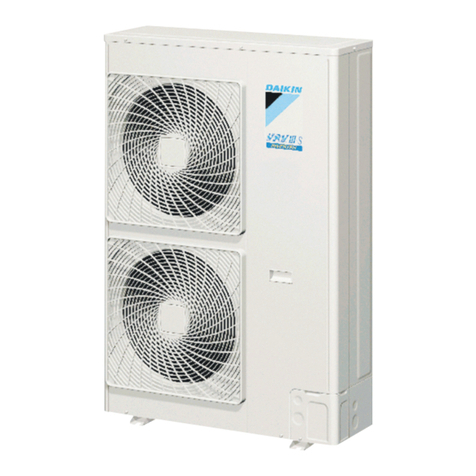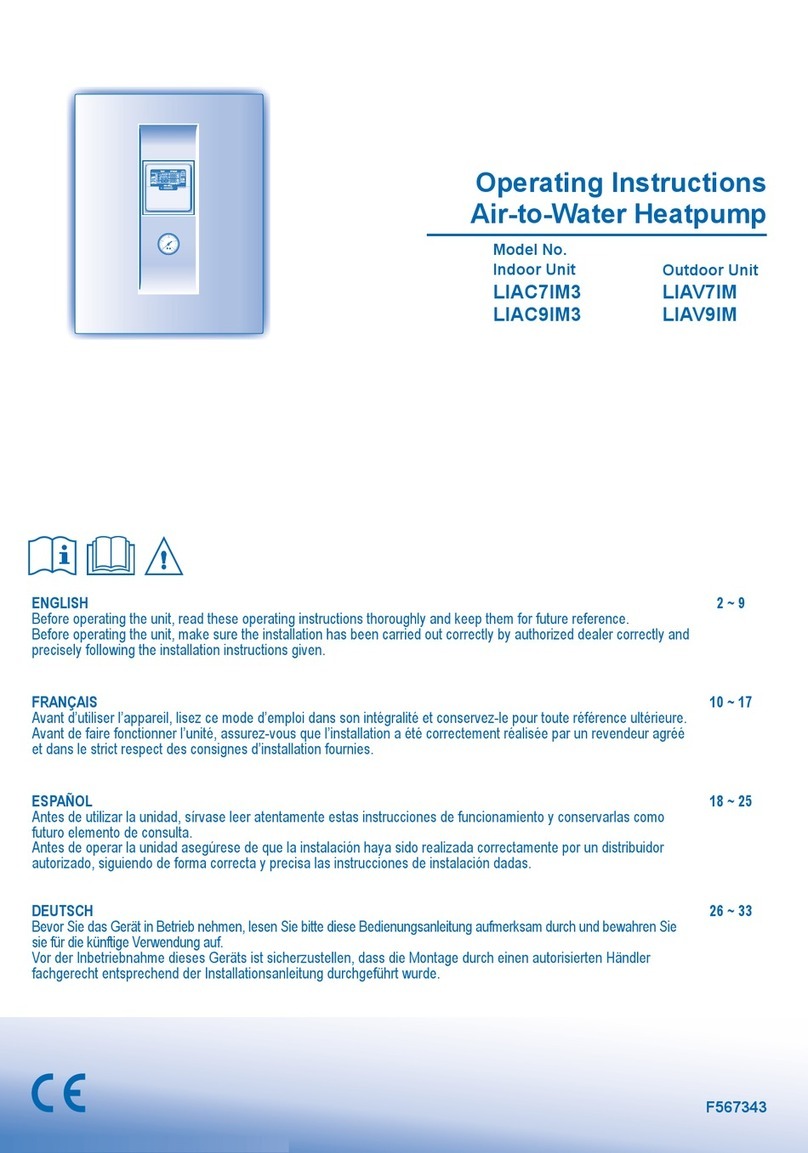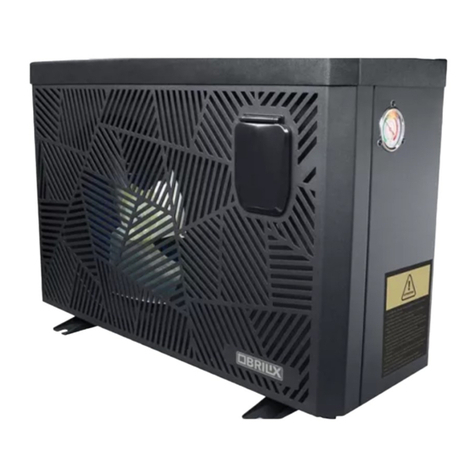
9
Cooling — Gradually lower the thermostat
temperature setpoint below the actual room
temperature and observe that the outdoor unit
and indoor blower energize. Feel the air being
circulated by the indoor blower and verify that
it is cooler than ambient temperature. Listen
for any unusual noises. If present, locate and
determine the source of the noise and correct
as necessary.
Short Cycle Protection — With the system
operating in COOLING mode, note the setpoint
temperature setting of the thermostat, and
gradually raise the setpoint temperature until
the outdoor unit and indoor blower de-energize.
Immediately lower the setpoint temperature of
the thermostat to its original setting and verify
that the indoor blower is energized and that the
outdoor unit remains de-energized.Verify that,
after approximately 5 minutes, the outdoor unit
energizes and that the temperature of the air
supplied to the facility is cooler than ambient
temperature.
Heating — Lower the thermostat setpoint
temperaturetothelowestobtainablesettingand
set the thermostat function switch to HEATING.
The indoor blower and outdoor unit should stop
running.Afteraminimumoffiveminutes,increase
thesetpointtemperatureofthethermostattothe
maximumsetting.Verifythattheoutdoorunitand
indoorblowerhaveenergized.Feelthe airbeing
circulated by the indoor blower and verify that
it is warmer than ambient temperature. Listen
for any unusual noises. If present, locate and
determine the source of the noise and correct
as necessary.
NOTE: Other sources for heating (i.e.: electric
furnace, fossil fuel furnace, air handler with
electric heat options, etc.) that interface with
the unit should be functionally checked to verify
system operation and compatibility.Refer to the
installation instructions for this equipment and
performafunctionalcheckoutinaccordancewith
the manufacturer’s instructions.
OUTDOORTHERMOSTAT (if supplied)
The outdoor thermostat prevents the electrical
auxiliary heat (if used) from operating above
40°F outdoor ambient temperature.
Defrost CycleTimer — The defrost cycle timer
controls the time interval of the hot gas defrost
after the defrost sensor closes. It is located
in the lower left corner of the defrost control
board. Three interval settings are available: 30
minutes,60minutes,and90minutes.Timesetting
selectionisdependent on the climate where the
unit is being installed.
Example 1. Dry climate of Southern
Arizona. A 90 minute setting is
recommended.
Example 2. Moist climate of Seattle,
Washington. A 30 minute setting is
recommended.
To set the cycle timer, place the timing pin on
the defrost control board to the desired time
interval post.
Note: Allunitsareshippedfromthe factory with
thedefault timesettingof30minutes.Maximum
heatingperformancecanbeachievedbysetting
the time to 90 minutes.
DEFROST CONTROL BOARD OPERATION
ANDTESTING
1. Terminals “R”-”C” must have 24±V present
betweentheminorderforthetimedelayand
defrost sequences to be operational.
2. Jumper the “T2”-”DFT” test pins. This will
indicate to the board that the defrost T-stat
is closed(if the compressor is running).
Defrost T-stat is closed at 32° or below and
is open at 68° or above. But it’s state is
unknownifthetemperatureisbetween32°F
and 68°F. The defrost thermostat tells the
board whether a defrost cycle needs to be
started or terminated. With the DFT closed
the unit will run for 30/60/90 minutes in heat
modeandthendefrost the outdoorcoil. The
defrostwillturnofftheoutdoorfan,turnonthe
compressorandraisethecoiltemperatureto
68°F. This will open the DFT and terminate
the defrost. If the DFT does not open the
defrost will end after 10 minutes.
3. Defrost board speed-up. With compressor
running in heat mode, next jump the “Test”
pin to “C” on terminal strip.This will initiate
a defrost test in 5, 10 or 15 seconds (This
is determined by the 30, 60 or 90 minute
defrost pin settings.The factory setting will
be30minutes). Notethatthiswillbypassthe
compressoroffdelaywhentheunitgoesinto
defrosttestandifleftindefrosttest,thedelay
willbebypassedwhenthetestisterminated
by the processor. If the jumper is removed
before the test is over the processor will
perform the remainder of a normal defrost.
See step 2 above.
4. Remove the jumpers.
Note: The delay/no-delay pin concerns
compressoroperationduringdefrosts.Thedefault
setting is delay. Reciprocating compressors




















